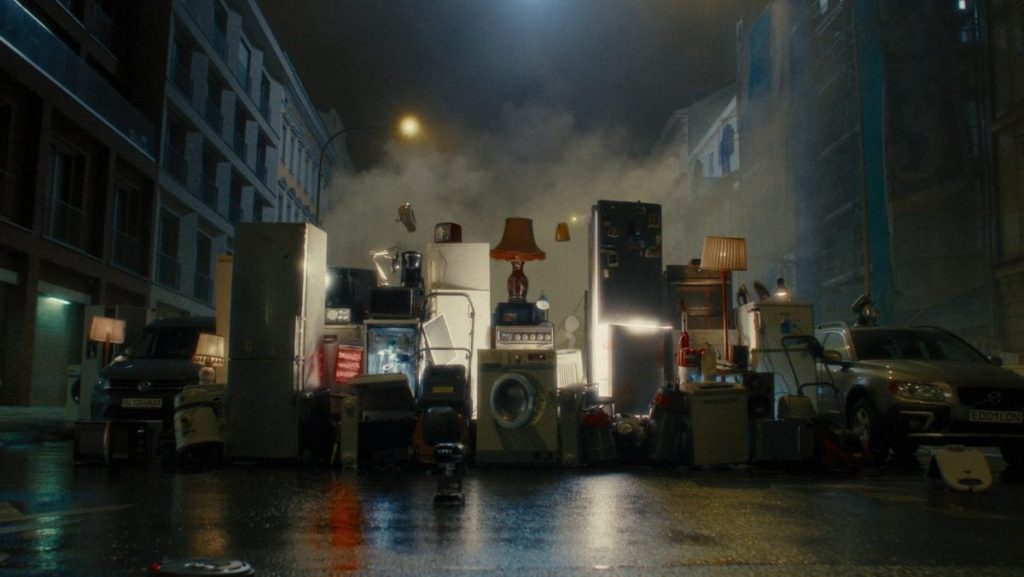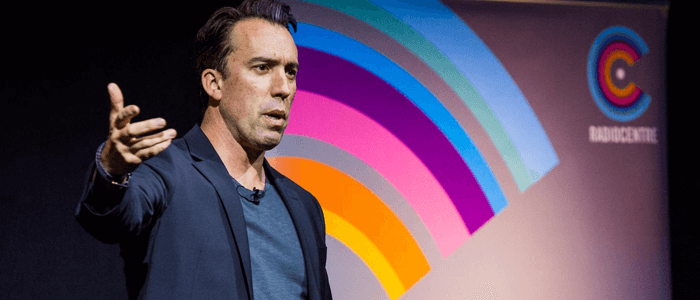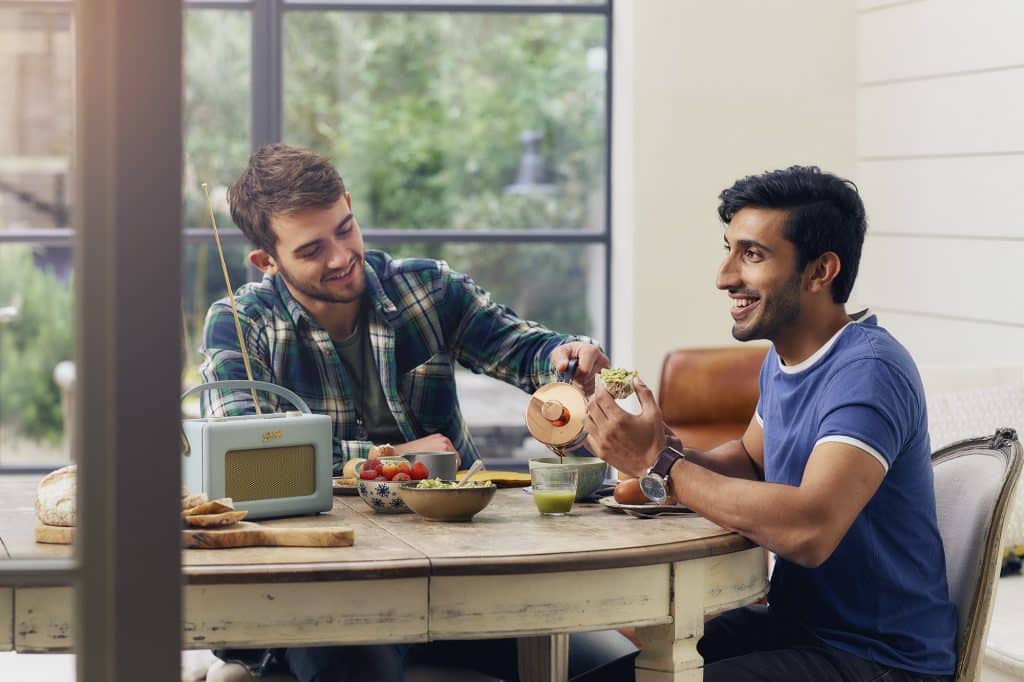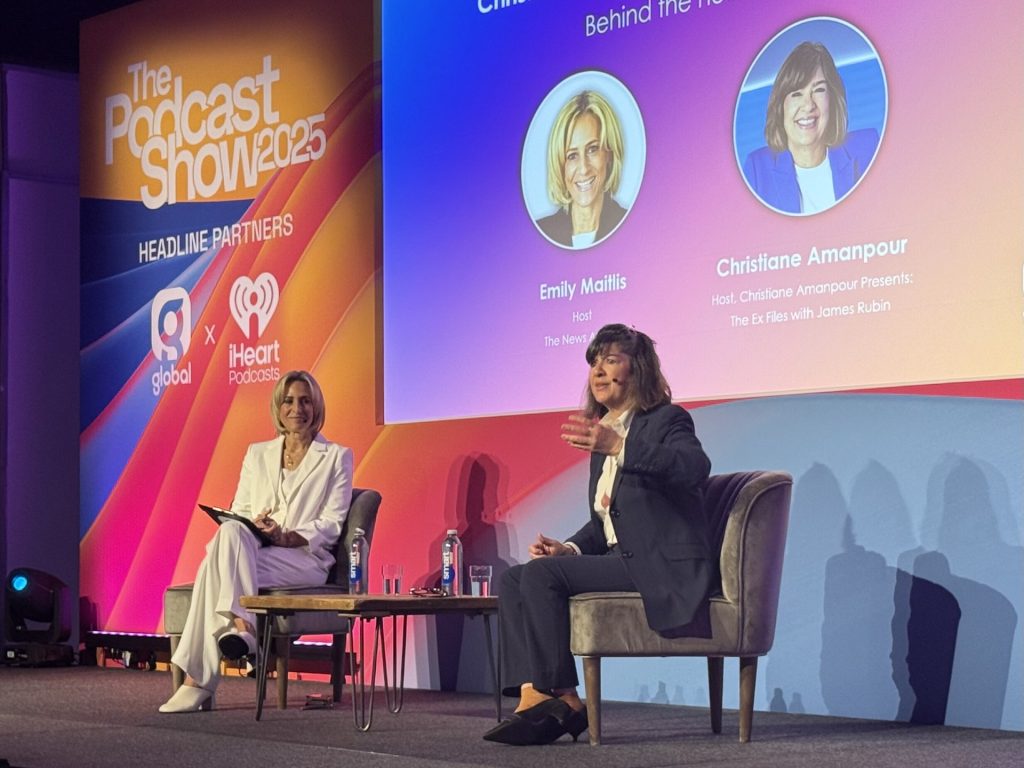
In Radio We Trust: Tuning In 2017

There was standing room only at Tuning In 2017, Radiocentre’s annual conference, on Thursday 11 May 2017. A stellar array of speakers took to the stage at London’s Ham Yard Hotel to discuss and debate the interesting times we’re living in. Social media and digital technology are shaking up the old truths. Why have pollsters struggled to call some of the biggest political events in the last couple of years? Is it because of “fake news”, or a metropolitan elite more and more out of touch with the country at large? Or is there a more fundamental shift at work? One thing is certain: trust is becoming a huge issue, whether in an editorial or advertising context. Tuning In 2017 sought to explore why this is happening, how advertisers can re-evaluate their thinking and the opportunities presented to both the radio industry and marketers by the rise in audio and voice-control.
Commercial radio is in robust health
Siobhan Kenny, Radiocentre’s CEO, introduced the conference with the message that commercial radio is thriving. The medium posted record revenues for 2016 and it is on track for 2017. This revenue performance is underpinned by robust audience figures (90% of the population listening to radio each week and 35 million to commercial radio, according to Rajar).
Radiocentre’s See Radio Differently campaign, created by Lucky Generals, was launched last year and has been well received. Featuring senior marketers such as Unilever’s Keith Weed, these ads not only succeeded in creating a buzz around commercial radio on social media but also prompted Unilever to double its spend on the medium. It has led to a number of interesting conversations between Radiocentre and brands that hadn’t previously put radio high on their schedules.
Radio’s ability to connect with audiences throughout the nation, its power to relate to all and to burst the “London bubble” is one of its great strengths. Radiocentre’s HQ is in the heart of London, but Kenny emphasised the body’s goal for the last year and in the future: to get out and about, talking to the consumers of commercial radio throughout the UK. We all learn more when we speak to a diverse audience.
Diversity is the solution, not a “problem”
Dan Brooke, Chief Marketing and Communications Officer at Channel 4, took up the theme of the importance of and business case for diversity. Channel 4 introduced a more organised, strategic approach to diversity following Lenny Henry’s 2015 call for a “sea change” in the TV industry. The broadcaster now reports back to Parliament each year on its progress on diversity and holds an annual lecture on the subject. This has resulted in Channel 4 becoming the first company to achieve the top-level rating in Ernst & Young’s National Equality Standard.
Brooke believes that there’s a moral imperative in championing diversity. It’s also in Channel 4’s public service remit. But there’s also a clear business case: it makes the broadcaster more creative and innovative – and therefore more successful commercially. In problem-solving situations, it helps to involve a range of people as they bring different ideas and world views to the table. Brooke said that Channel 4 has reached a point where two thirds of the onscreen presenting talent has disabilities and 19% of the crew is disabled.
Radio: the power to move people
Bridget Angear, Joint Chief Strategy Officer at AMV BBDO was next up. She spoke about radio’s power to motivate and move people in the context of her work on what stirs people to create and become involved in movements. According to Bridget, the prevailing winds are in radio’s favour because it creates happiness in people more than any other medium. In this era of fake news, radio, which is so suited to storytelling, is the most trusted medium and that’s a powerful thing to be able to claim.
Radio is undervalued as a brand building medium, it is pitted against direct response channels when it cannot ever be as measurable as Facebook and Google. Yet radio has a much greater strength: it’s a highly emotional medium. And the more emotional advertising can be, the more effective and profitable it becomes. Bridget asserts that there’s a real role for brands that stand for something and bring about change. Radio works for people who tell stories about what they stand for and believe in.
Brand safety: where does the buck stop?
After introducing a film showcasing the work that Bauer Media Group is doing with young people at the Bauer Academy, LBC Presenter, Journalist and event chair Shelagh Fogarty joined three panellists who thrashed out the hot topic of brand safety. First, Alexi Mostrous, Head of Investigations at The Times, is the journalist who spearheaded the paper’s recent scoop on advertising from big brands appearing alongside terrorist material on YouTube. Second, Simon Kilby, Group Commercial Director at Bauer Media. The third panellist was James Chandler, Chief Marketing Officer at IAB UK.
Fogarty introduced some broad themes, including how much the media knew about advertising appearing alongside offensive material, the chances of real regulation of online content given the sheer scale of the Internet and the irony of Facebook running a recent ad campaign in newspapers to warn the public about fake news.
Simon Kilby pointed out that agencies have been asking Google and Facebook to demonstrate greater transparency for a long time, but that Mostrous’s article, coupled with a recent plea from Procter and Gamble’s Marc Pritchard for the companies to step up to the plate has challenged them. But as Mostrous asserted, the profit motive and a desire to expand lie at the centre of Google and Facebook. But this goal is contradictory to safeguarding and regulatory controls. A structural tension lies at the heart of the matter and it won’t go away.
Fake news and the London bubble
The next session brought together Baronesses Tessa Jowell and Tina Stowell to debate the rise of fake news and the argument that a divide has emerged between the so-called London elite and the rest of the UK. Shelagh Fogarty moderated for the second time, raising subjects including why Britain voted for Brexit, whether this exposed divisions rather than creating them, fake news and the public’s lack of trust in politicians.
Getting Vocal: the implications of voice activation
Radiocentre’s Planning Director, Mark Barber, then talked about the findings of Getting Vocal, the body’s new research study, co-funded by Radioplayer. Amazon Echo, launched just six months ago, is now owned by 9% of UK households and four in ten adults said that they plan to purchase a device for their home in the near future. Amazon Echo provides a shared experience, 58% are placed in the living room. Where households own more than one Echo, the second device is often found in the bedroom, challenging the mobile phone’s dominance as the first and last device of the day.
The device is used frequently, with 81% of owners accessing it daily and 77% listening to radio through their Echo, making the medium the most widely accessed audio entertainment. More than 50% of Echo users have heard radio ads. “More audio listening is good for advertisers because more ears are available and more often,” says Barber. He concluded with some advice for brands around developing a consistent brand sound for voice-activated devices. He said: “forward-thinking, sound conscious advertisers can start experimenting now and Echo is the ideal lab in which to experiment.”
What makes a good voice experience for radio?
Michael Hill, Founder and MD of Radioplayer, then talked the audience through the technical challenges of making content navigable on voice-activated devices. While TuneIn is supplied as the default radio service on Amazon Echo, Radioplayer has also built an Echo “skill” that users can download to access stations. What’s more, Radioplayer has developed its own algorithm that allows listeners to access stations based on listening habits, location, and what’s trending. Echo users have embraced this skill, with 63% of device owners using it.
The Radioplayer team is working on more complex voice-activated interactions and is exploring the possibilities for in-car use, with the research showing that 81% of Amazon Echo owners likely to set up the device in their car once this option is available.
The story teller
Absolute Radio’s hugely popular Christian O’Connell closed the conference with a lively mix of comedy and anecdotes which provided an insight into why radio means so much to us – and now more than ever. “Radio is getting more popular, because people still want some sort of filter,” he said. “New media makes people feel alienated. Although we’re in a digitally connected world, there’s also a disconnect. But Radio fosters a sense of connection. People still feel it deeply. It’s all about the story telling.” He added that in his opinion, languishing in the comfort zone is the death of creativity. “Seeing radio differently, creatively, is about pushing yourself out of your comfort zone,” he said.



